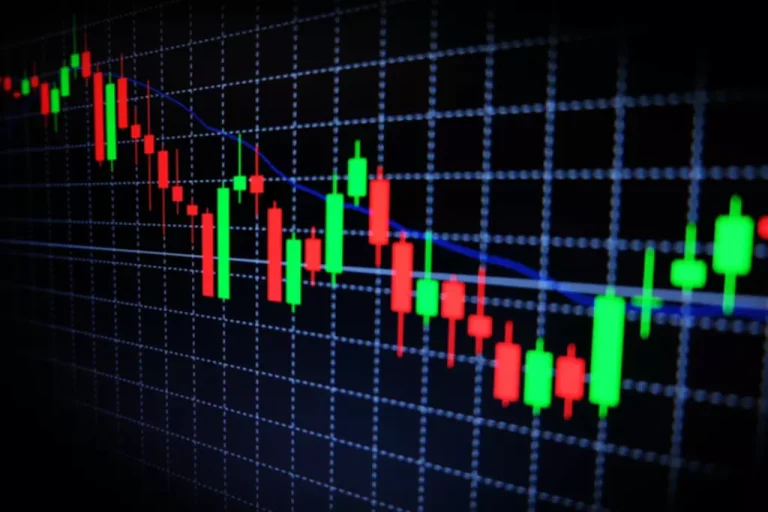But don’t forget about unanticipated events, which occur on a regular basis and cause B-book brokers to incur massive losses, often for many months at a time. Any broker that tends to operate based on this model will be passing orders to the liquidity provider directly. Conversely, other brokers may decide to pass such on to another liquidity pool. 95% of retail forex traders lose money, so market makers are very profitable from their counterparty operations. B book forex brokers typically charge a fixed spread which you pay for every time you open or close a position. For one, having fixed spreads makes it easier for you to trade when there are market shocks.
With regulation requiring best execution, the outcomes of both clients’ trades, no matter what the model, would be the same. Additionally, it is worth mentioning that you can see the spreads on such currency pairs tighten during regular market hours. Nevertheless, during off-market hours (such as the early Asian trading session), you will experience precisely the opposite, meaning that spreads will probably widen. The irony of this is if you are trading with a B-book broker then it is a zero-sum game, since they are literally trading against you no matter what time frame or market you’re trading on. But in any case – even if you don’t have access to high leverage, if your broker profits from your losses, then they have no incentive to help you educate yourself and get better at trading.
The advantage of the ECN model compared to the STP is the number of participants (both traders and liquidity providers). The more participants, the more liquidity (trade volumes) and the narrower is the spread. Each participant tries to offer the best price, and all traders get the best current Bid/Ask price.
Rather it is the lack of understanding of how dangerous leverage can be. Many retail traders, especially those new to trading, typically have no idea what good “risk management” looks like. Whereas an A-book broker is a business that offers their services to professional traders.
Addressing the limitations of the A-Book and B-Book models, the hybrid model emerged, favored by many established brokers. In this approach, the broker handles smaller transactions internally, while more substantial ones are routed to liquidity providers
and subsequently to the interbank. This presents an optimal but nuanced strategy for both parties. Brokers face the challenge of correctly classifying traders.
I have even been told the regulators actually encourage the practice because it results in clients’ trades executing at a better price (due to the order being filled instantly). Client orders are delivered to the market in two various ways via distinct types of broker operating technologies. We are going to discover the difference between A book and B book broker models. A-Book models are the most common form of broker operating technology.
It is a widely known fact that the Forex brokerage market may provide numerous opportunities for success if you handle money management and emotions responsibly. Thus, apply a model that suits your requirements and prepare for a long yet exciting trading journey. In the regulated futures contract and stock markets, all transactions are sent to an exchange that confronts buyers’ and sellers’ orders by sorting them according to price and time of arrival. Look for A-Book Versus B-Book Brokers that you can rely on to provide a stable and secure trading environment, allowing you to execute trades with A-Book Versus B-Book Brokers confidently. On the other hand, there is one downside; this is the fact that traders may likely experience variable spreads.

They set their own risk limits, and if their risk limit happens to be their entire account, then there’s a non-negligible chance they will blow their entire account. If you work for a professional trading institution like a prop firm or hedge fund, there are risk measures put in place to prevent their traders from blowing up. Angus Walker (ex-General Manager of IC Markets) is extremely critical of the B-book model after having witnessed how it operates from behind the scenes of the industry. A B-book is essentially a ledger of trades held by your broker listing trades which you placed, but these trades were not actually sent to the underlying market. Recently I was interviewed by a forex broker about my knowledge of the TradingView platform. On the other hand, if you’re trading a small account the odds are that your trades are executed on B-Book.
To efficiently identify profitable traders, as well as unprofitable ones, forex brokers have software that analyses their clients’ orders. The popularity of the hybrid model is understandable because it allows FX Brokers to increase their profitability and credibility. It also allows Brokers to earn money from profiting traders by sending their trading orders to liquidity providers without generating conflicts of interest. The difference between the A-book and B-book forex brokerage model is pretty simple. The A-book utilizes interbank market executions for clients’ orders, while the B-book process leads to internal order fulfilment without the usage of the interbank market.
So long as that is the case, they will continue to find new ways to “encourage” their clients to lose money and remain uneducated about the proper ways to trade and manage risk. Having a standardised approach to closing out a retail trader’s positions if their trades are going against them so severely that they risk blowing their account is a perfectly logical measure. Excessive leverage can lead to you blowing up before you have the chance to educate yourself, and offering high leverage with minimal requirements is a common trait of B-book brokers.
ECN/STP brokers are the brokers that combine both models without prioritization, focusing on the speed of finding a matching trade. The ECN model provides equal rights for all traders and liquidity providers. In the STP model, the conditions were largely imposed to the trader by a particular provider. The ECN is a kind of platform where everyone what is a book vs b book places Bid/Ask orders that affect the market liquidity. DD brokers, market makers, Dealing Desk brokers – all these mean the same counterparty, which takes the other side of the client’s trade, executing almost all the trades with its internal system. Dealing Desk brokers create a market for the client, serving as market makers.
- To get the full article and the bigger picture on the future of the FX/CFD industry and used dealing models, get our Latest Quarterly Intelligence Report HERE.
- Because your orders are processed directly to the liquidity pool, you will witness variable spreads.
- The broker is just an intermediary in providing financial services.
- The A-Book broker earns through commissions on a set transaction volume (typically per lot) or via spread
markup.
Almost every broker in the world is a mixture of A-Book and B-Book. It’s not like there’s a secret fraternity of A-Book brokers that walk around in white https://www.xcritical.in/ suits releasing doves into the wild and saving homeless traders from the street. All brokers (with very few exceptions) are a combination of A & B-Book.
The higher the exchange rate goes when you go long, the more money you’ll get. CFDs are leveraged trading products, which means that when you are trading CFDs, the potential of your profits is significantly higher and the chances of losing money rapidly. However, the main difference between CFD trading and traditional trading is that you do not physically own the underlying asset.
